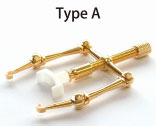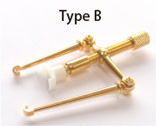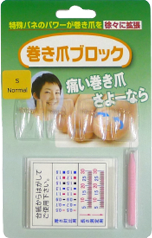Joint research with the University
Background of the joint research
 We have contacted associated professor Yanagida of Tokyo Electronic Univ., for development and research of the effectiveness for “Makizume Robo”. In the experiment, we have used nail that is already cut off.
We have contacted associated professor Yanagida of Tokyo Electronic Univ., for development and research of the effectiveness for “Makizume Robo”. In the experiment, we have used nail that is already cut off.
Experiment. 1Nail softening by warm water
- Subject Y
- Subject M
- Subject U
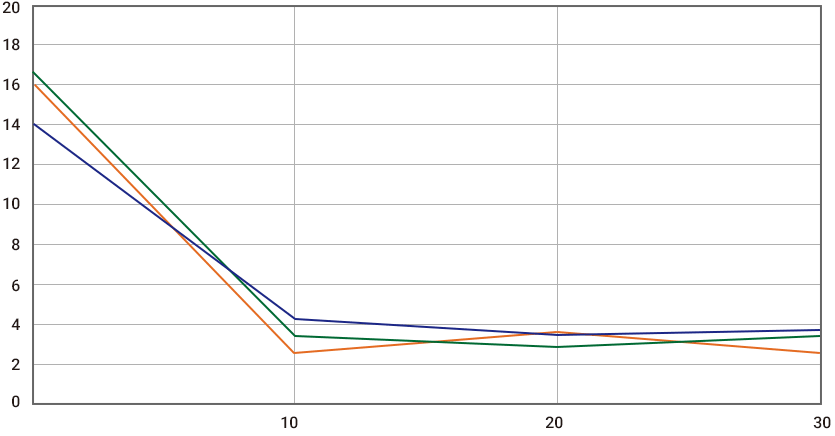
The Vickers Hardness HV
Change of hardness / min Change of hardess at 37°C
- Subject Y
- Subject M
- Subject U
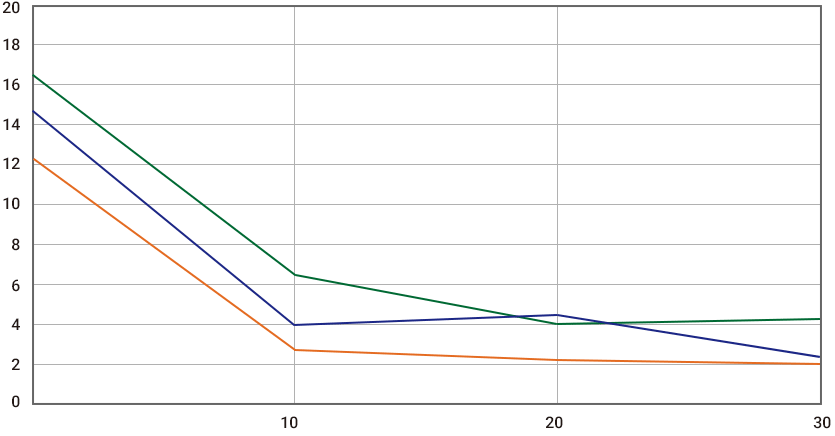
The Vickers Hardness HV
Change of hardness / min Change of hardess at 40°C
Surprisingly, the hardness becomes 1/4 after soaking
When a nail is absorbed sufficiently, softening advances towards about 1/3-1/4 compared with dry condition. The nail is saturated in approximately 10-20 minutes.
The university’s point of view
A cut nail is embedded in the resin which hardens with 60°C. It was gauged with the condition of 300gh,15s micro Vickers hardness. Hardness measurement result tends to blur, but we’ve confirmed the fall of hardness with extending bath time.
There could be differences with age band, as 2 subjects are in their 20s, and 1 in 40s.
Experiment. 2Induration of a nail by drying
Condition of the experiment
| Condition | 10min in 40°C |
|---|---|
| duration[sec] | 0,30,60,120,150 |
| watts | 1200W |
| Between the nail and the dryer[cm] | 20 |
| vickers test load[kgf] | 0.5 |
- Subject Y
- Subject M
- Subject U

The Vickers Hardness HV
Change of hardness / min Change of hardess at 40°C
10min till the nail returns to its original hardness
We’ve got a result of about 3min of drying time until the nail returns to its original hardness. A nail is replenished from the root of the nail, thus more than a triple time, about 10min is required for drying time.
The university’s point of view
As it takes seconds to measure hardness, we’ve utilized different nails of a same person.
We can see that as drying time increases, the hardness rises.
In the experiment, the dryer was quite close to the nail, little too small, and the cut nail is more easier to
dry, thus the actual drying should require more drying time.
Experiment. 3The mechanism of a nail maintaining
its shape after dry
This result indicates a strain distribution of a nail (the transformable degree).
As a result of the simulation, it was indicated that when a corrected nail is dried sufficiently with warm water, most part of it can be maintained in the corrected shape.
The university’s point of view
We used LS-DYNA and distortion analysis on the nail correction.
We analyzed the nail as an elastic body, and the machine as a rigid body. The hook screw was turned to lift as an actual product, and stabilized 2/5 of the nail as the boundary condition.
The result indicates that in the corrected condition, the range of more than 0.15 warps is widely seen.
Although not stated here, we tested with small piece of fragment (mark distance 3mm and width 1mm), and the Young’s modulus fell to about 1⁄4 by soaking, same with the hardness. In other words, the Young’s modulus rises after dryness, and when softening after drying, the plastic distortion is left as the permanent set, so we think it’s possible to freeze the shape of the nail.
The simulation was made with many thanks to Ozaki lab of Yokohama National University.
Summary
The investigation was done to set the guideline of the ingrown nail correction. The result could vary, as the nail is cut thoroughly, and the condition is not the same with actual treatment.
However, the soak temperature, soak and dry duration should have been proved. Also, we’ve found out that the Young’s modulus fell by soaking from tension testing. By a change in this Young’s modulus, it can be said that the recovery (spring back) when drying, is restrained, and also that the shape of the nail when correcting, can be frozen.
Effectiveness of the "Makizume Block"
Proven by an official organization
With a support of an official organization, we’ve run an elastic stress test.
The test proved the function to lift both sides of the nail.
 【Test condition】
【Test condition】
■ sex:female
■ nail surface length:18mm
■ thickness:0.9mm
■ Makizume Block:Type Normal
■ tension:240g

